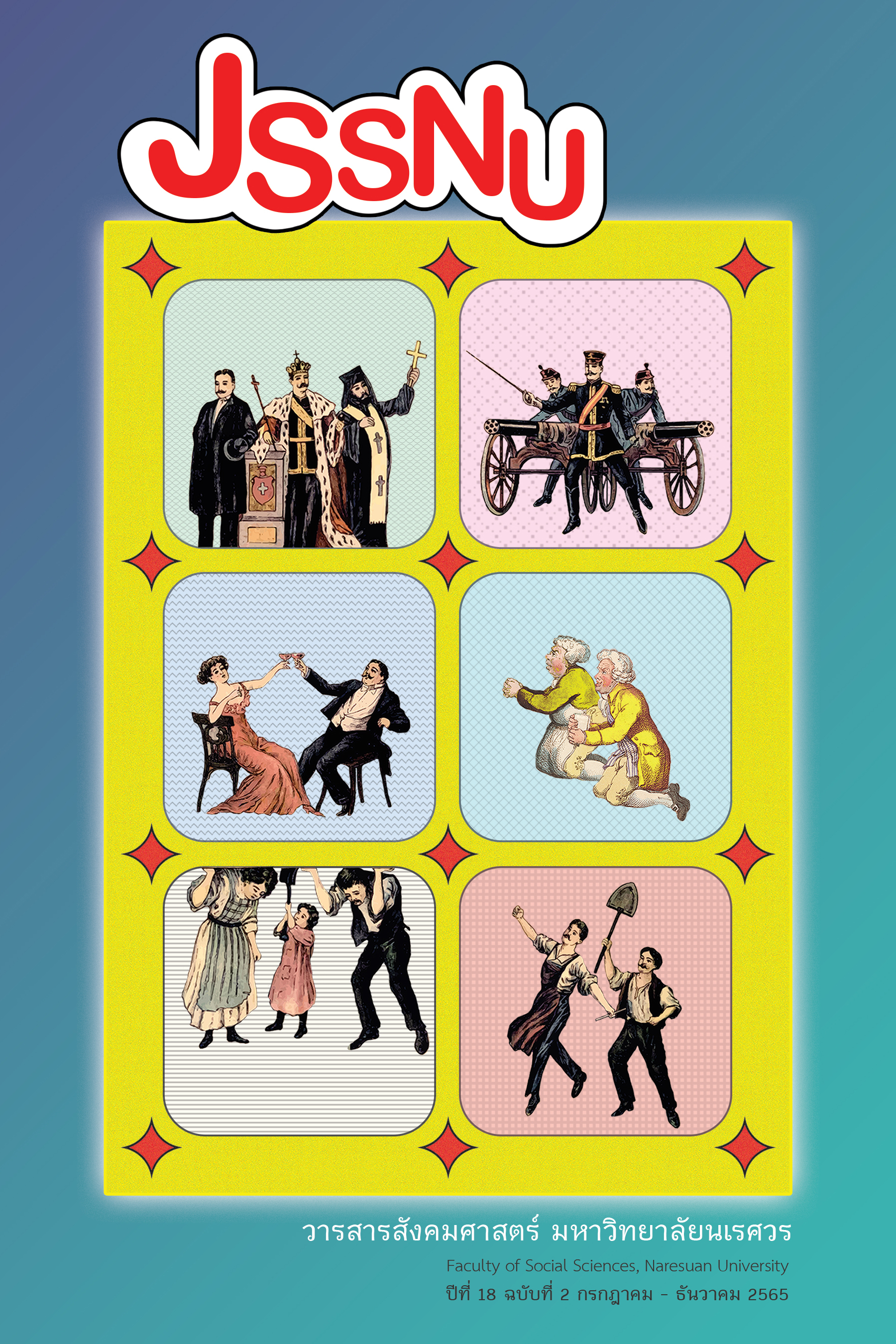The Accountability Concept in Public Administration Theory: Conceptual Development from the Past to the Present
Main Article Content
Abstract
In the shade of the Governance concept, the accountability concept has been part of the current governance paradigm of Public Administration Theories. The accountability become a new concept that appear with governance. This research finds out that has the accountability concept just been defined as current public administration theory? And how does the development of accountability concept in the public administration theories era? The study is the qualitative research with documentary and textual analysis. The result of research found that the explanation of accountability relationship has appeared since the classical public administration theory era but doesn’t use the term “Accountability” directly. The form of accountability has developed Internal Accountability to External Accountability and has more complexity in each era of public administration theories.
Downloads
Article Details

This work is licensed under a Creative Commons Attribution-NonCommercial-NoDerivatives 4.0 International License.
References
Baumgartel, H. (1960). The human side of enterprise by Douglas McGregor. Administrative Science Quarterly, 5(3), 464-467. doi:10.2307/2390668
Bezes, P. (2015). Michel Crozier, The bureaucratic phenomenon. In M. Lodge, E. C. Page, S. J. Balla (Eds.), The Oxford handbook of classics in public policy and administration (pp. 154-181). Oxford: Oxford University Press.
Boven, M. (2007). Analysing and assessing accountability: A conceptual framework. European Law Journal, 13(4), 447-468. doi: 10.1111/j.1468-0386.2007.00378.x
Bovens, M., Schillemans, T., & Goodin, R. E. (2014). Public accountability. In M. Bovens, R. E. Goodin, & T. Schillemans (Eds). The Oxford Handbook of public accountability. (pp. 1-23). Oxford: Oxford University Press.
Bowornwattana, B. (2005). Public administration theories and approach (1887-1970) (12th ed.). Bangkok: Chulalongkorn University Press. [in Thai].
Bowornwathana, B. (2006). Transforming bureaucracies for the 21st century: The new democratic governance paradigm. In E. E. Otenyo & N. S. Lind (Eds.). Comparative public administration (pp. 667-679). Amsterdam; Boston: Elsevier JAI.
Bruce, K., & Nyland, C. (2011). Elton Mayo and the deification of human relations. Organization Studies, 32(3), 383-405. doi: 10.1177/0170840610397478
Chantavanich, S. (2009). Qualitative research (17th ed.). Bangkok: Chulalongkorn University Press. [in Thai].
Denhardt, R. B., & Denhardt, J. V. (2000). The new public service: Serving rather than steering. Public Administration Review, 60(6), 549–559. Retrieved from http://www.jstor.org/stable/977437
Denhardt, R. B., & Denhardt, J. V. (2007). The new public service: Serving not steering. Armonk, N.Y.: M.E. Sharpe.
Gregory, R. (2009). New public management and the politics of accountability. In S. F. Goldfinch & J. L. Wallis (Eds.). International handbook of public management reform (pp. 66-87). Cheltenham; Northampton: Edward Elgar.
Gulick, L., & Urwick, L. (1937). Paper on the science of administration. Retrieved from https://ia902808.us.archive.org/34/items/papersonscienceo00guli/papersonscienceo00guli.pdf
Henry, N. (2010). Public administration and public affairs. (11th ed.). New York: Pearson Education.
Hood, C. (1991). A public management for all seasons?. Public Administration, 69(1), 3-19. https://doi.org/10.1111/j.1467-9299.1991.tb00779.x
Jacobs, D. (2004). Book review essay: Douglas Mcgregor: The human side of enterprise in peril reviewed works: The human side of enterprise by Douglas McGregor; Douglas Mcgregor, Revisited: Managing the human side of the enterprise by Gary Heil, Warren Bennis, Deborah C. Stephens. The Academy of Management Review, 29(2), 293-296. Retrieved from https://www.jstor.org/stable/20159034
Laegreid, P. (2014). Accountability and new public management. In M. Bovens, R. Goodin, & T. Schillemans (Eds), The Oxford Handbook of public accountability (pp. 1-18). Oxford: Oxford University Press.
Linz, J. J., & Stepan, A. (1998). Toward consolidated democracies. In T. Inoguchi, E. Newman, & J. Keane (Eds.), The changing nature of democracy (pp. 48-67). New York: The United Nations University.
Lynn, L. E. (2006). Public management: Old and new. London: Routledge.
Mashaw, J. L. (2006). Accountability and institutional design: Some thoughts on the grammar of governance. In M. W. Dowdle (Ed.), Public accountability designs, dilemmas and experiences (pp. 115-156). Cambridge, UK: Cambridge University Press.
Merton, R. K. (1940). Bureaucratic structure and personality. Social Forces, 18(4), 560–568. https://doi.org/10.2307/2570634
Piotrowski, S. J., & Rosenbloom, D. H. (2003). Paul Appleby, public administration, democracy, and transparency. New Deli: The Indian Institute of Public Administration.
Rhodes, R. A. W. (1996). The new governance: Governing without government. Political Studies, 44(4), 652–667. doi: 10.1111/j.1467-9248.1996.tb01747.x
Shafritz, J. M., & Hyde, A. C. (2007). Classic of public administration (6th ed.). Boston, MA: Thomson Higher Education.
Simon, H. A. (1997). Administrative behavior: A study of decision–making processes in administrative organization (4th ed.). New York: The Free Press.
Storing, H. J. (1965). Leonard D. White and the study of public administration. Public Administration Review, 25(1), 38-51. https://doi.org/10.2307/974006
Wilson, W. (1887). The study of administration. Political Science Quarterly, 2(2), 197–222. https://doi.org/10.2307/2139277


